Spicy, crispy and bloody red. The Killer Spaghetti (a.k.a. Spaghetti all’Assassina) is Italy’s hottest pasta dish around. Learn how to make it like a PRO with our video recipe or recipe card (below).
This Italian pasta recipe comes from Bari, Puglia in Italy. It originated in the 1960’s, so it’s a relatively modern traditional dish. In this recipe, we have rigorously followed the traditional Spaghetti all’Assassina recipe as published by the Accademia dell’Assassina (yes, that’s a real group!).
No, It’s Not Reheated Spaghetti!
At a glance, this spaghetti recipe may simply look like a tomato spaghetti reheated in the pan. It’s not!
Spaghetti all’Assassina (Assassin’s Spaghetti) is first fried and then slowly cooked like a risotto in a concentrated tomato broth. This creates a very unique texture and an incredibly concentrated flavor. This is because the spaghetti itself absorbs the flavor of concentrated tomato as it cooks.
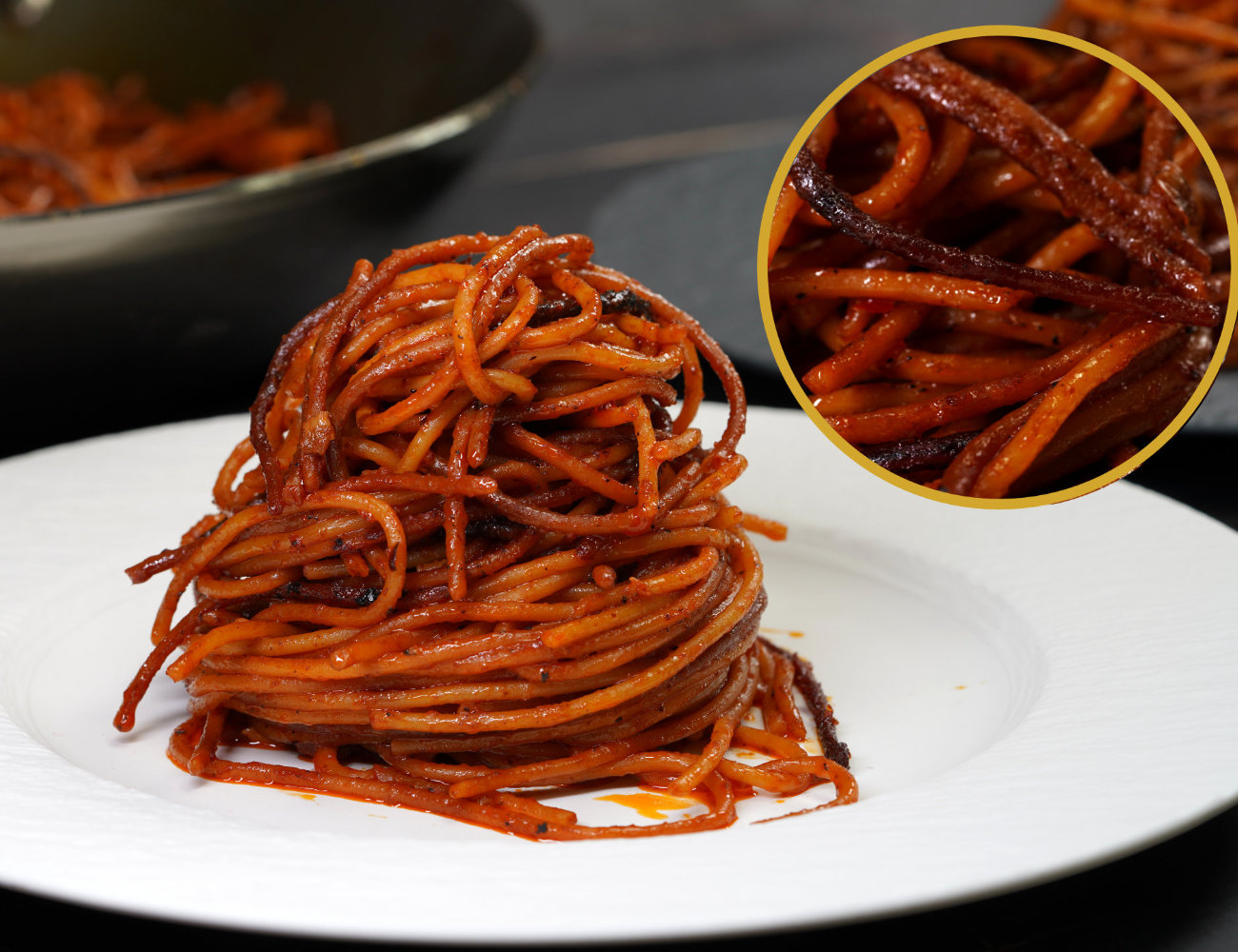
Watch the Video Recipe!
Watch the video recipe for Spaghetti all’Assassina from our English-only YouTube Channel:
Subscribe to our YouTube Channel
More video recipes? Subscribe to our YouTube Channel (it’s FREE) and click the bell to get notifications when we release a new video recipe!
In Italian? Spaghetti all’Assassina Ricetta Originale
How to Make Spaghetti all’Assassina
Products We Use and Recommend
We recommend several products below (affiliate links) which are also used in the video recipe. To make it easier, we’re summarizing the list here. Keep reading to learn why we recommend these products
Our carbon steel pan: https://amzn.to/3PypN1e Best Italian spaghetti brands: Rummo Spaghetti or La Molisana Spaghetti Best Italian tomato paste: https://amzn.to/3IbeCt8 Iwatani gas grill: https://amzn.to/3VdfHnr
Choosing the Right Pan
To make the Killer Pasta of Bari, we first need to choose the right pan for the job.
The iconic way of cooking Spaghetti all’Assassina (Killer Spaghetti) requires that the spaghetti to be cooked entirely in a pan. So, ideally you’ll need a pan that can accommodate the length of the uncooked pasta without the need of breaking it.
Ideally, you should choose a pan that is…
- large —a 14” (36 cm) pan or skillet
- non-stick
- good at retaining heat
In the video, we are using a 14” (36 cm) carbon steel pan. It’s the minimum size required to avoid breaking the spaghetti.
Specifically, we are using a De Buyer carbon steel pan (affiliate link). We love this brand, and you will see this pan in particular featured in many of our video recipes. They are quality pans that will last. However, the De Buyer carbon steel pans do require that you season them yourself (following the manufacturer instructions) to make them naturally non-stick.
Learn how to season a cast iron skillet or carbon steel pan in our guide! In fact, we seasoned the De Buyer carbon steel pan we featured in this video in the guide.
We share why we love carbon steel pans and why we think this is the best carbon steel pan for cooking meat and sautéing vegetables in this article: Best Carbon Steel Pan
Find the carbon steel pan that we use here on Amazon: https://amzn.to/3PypN1e (affiliate link)
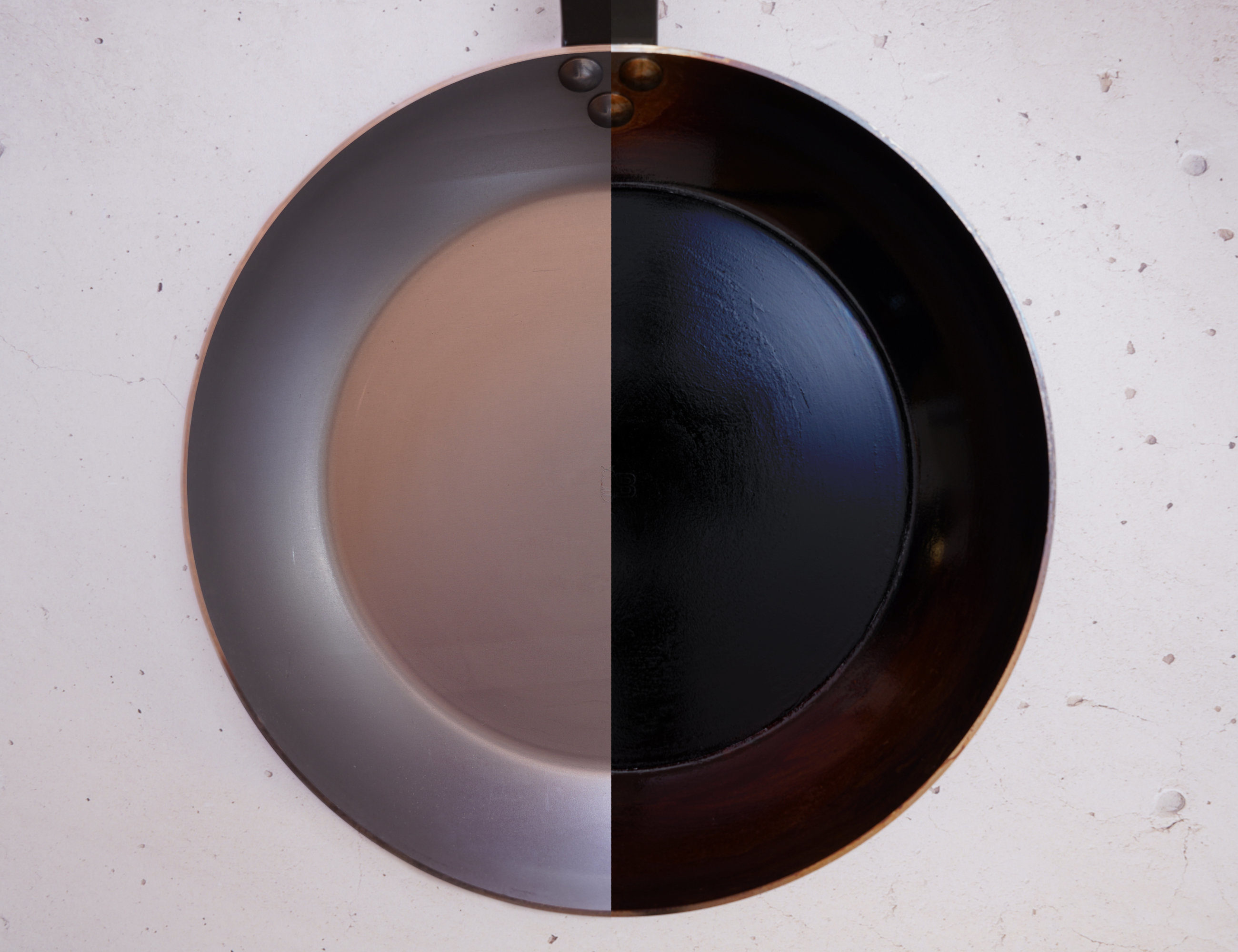
Pan Alternatives
The non-stick criteria is not optional for this recipe. Because this pasta is fried in the pan, it’s critical that the pan you use is non-stick!
Don’t have a carbon steel pan and don’t want to buy one? You can use a large seasoned cast iron pan.
Of course, you can use a non-stick pan made of teflon or similar. These pans will meet the non-stick criteria, but may not retain heat as well in order to provide an even cook.
Will Tomato Ruin Pan Seasoning?
Tomato sauces are acidic and can compromise a newly seasoned or poorly seasoned cast iron or carbon steel pan. Worst case scenario, this just means you might need to season it again.
As this article explains, however, a well-seasoned pan that has been in use for awhile should be able to stand up to the rigors of tomato sauce.
The official Spaghetti all’Assassina recipe specifies that cast iron or carbon steel pans be used for the job, so we are sticking to tradition here!
Pan Not Large Enough?
Break off the ends of uncooked pasta so that they can fit in your pan or skillet. The spaghetti should be able to lay flat in the pan.
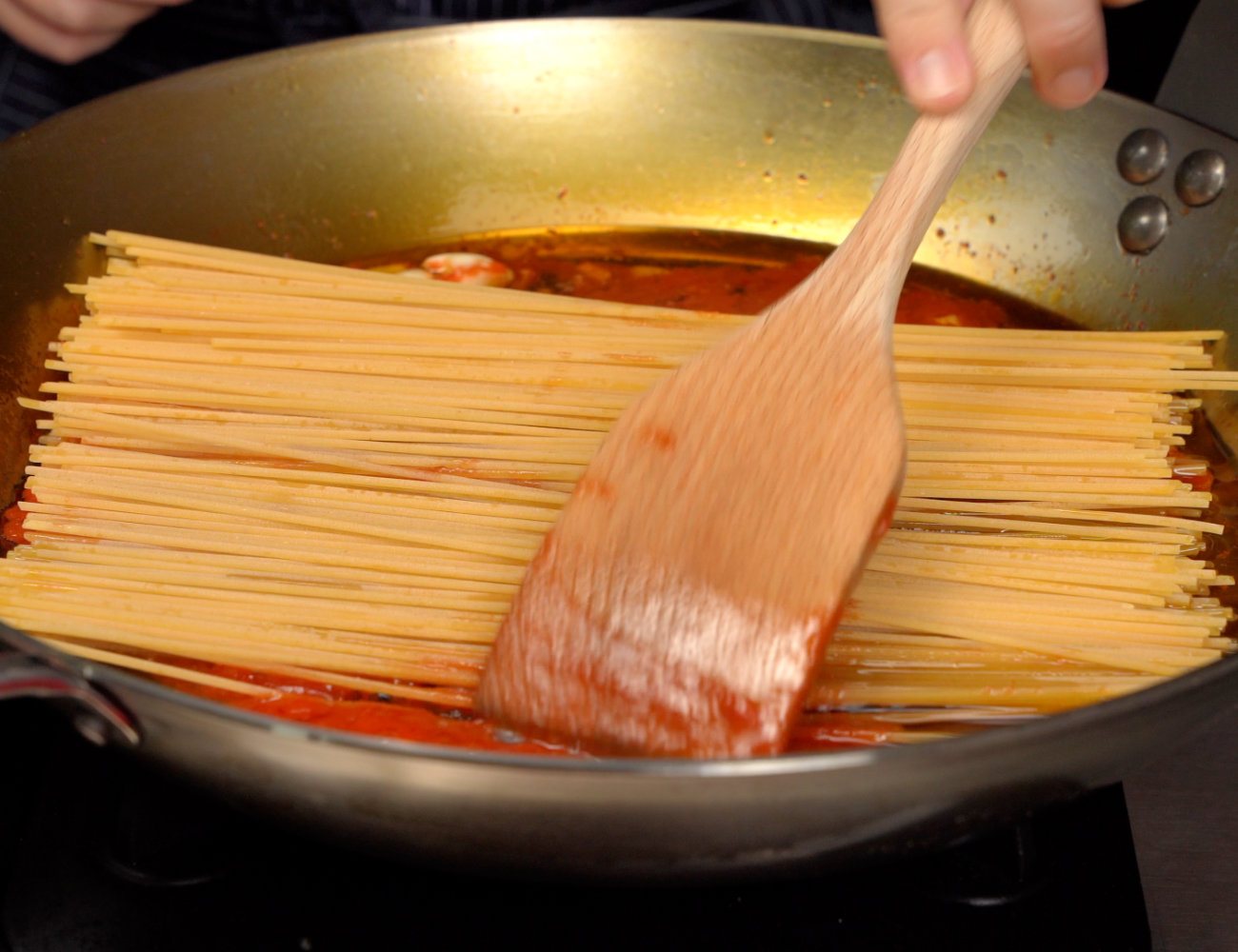
Killer Pasta: Ingredients
The Spaghetti all’Assassina recipe has just a few ingredients. The magic is in their preparation! Of course, you also want to choose quality ingredients. Keep reading for recommendations.
Tomato Purée
Choose a brand of tomato purée that is very sweet. Ideally, choose a tomato product made in Italy with San Marzano tomatoes. These tomatoes are world-renowned for their sweet, concentrated flavor.
Mutti (affiliate link) is an Italian brand that is also available abroad. We can confirm their tomato puree (affiliate link) sold in the United States is also sweet and delicious. Another sweet tomato purée in the United States is Pomì. We like both of these brands.
Avoid tomato products that contain citric acid—this preservative ruins the taste of tomato products! If needed, you can add a pinch or two of sugar to a tomato that is too acidic. However, it is far better to just choose a quality tomato product.
Tomato Broth
The official Spaghetti Assassina pasta recipe calls for a tomato broth made of water and tomato paste. We almost always reach for a Mutti double or triple concentrated tomato paste (affiliate link) which is also available abroad!
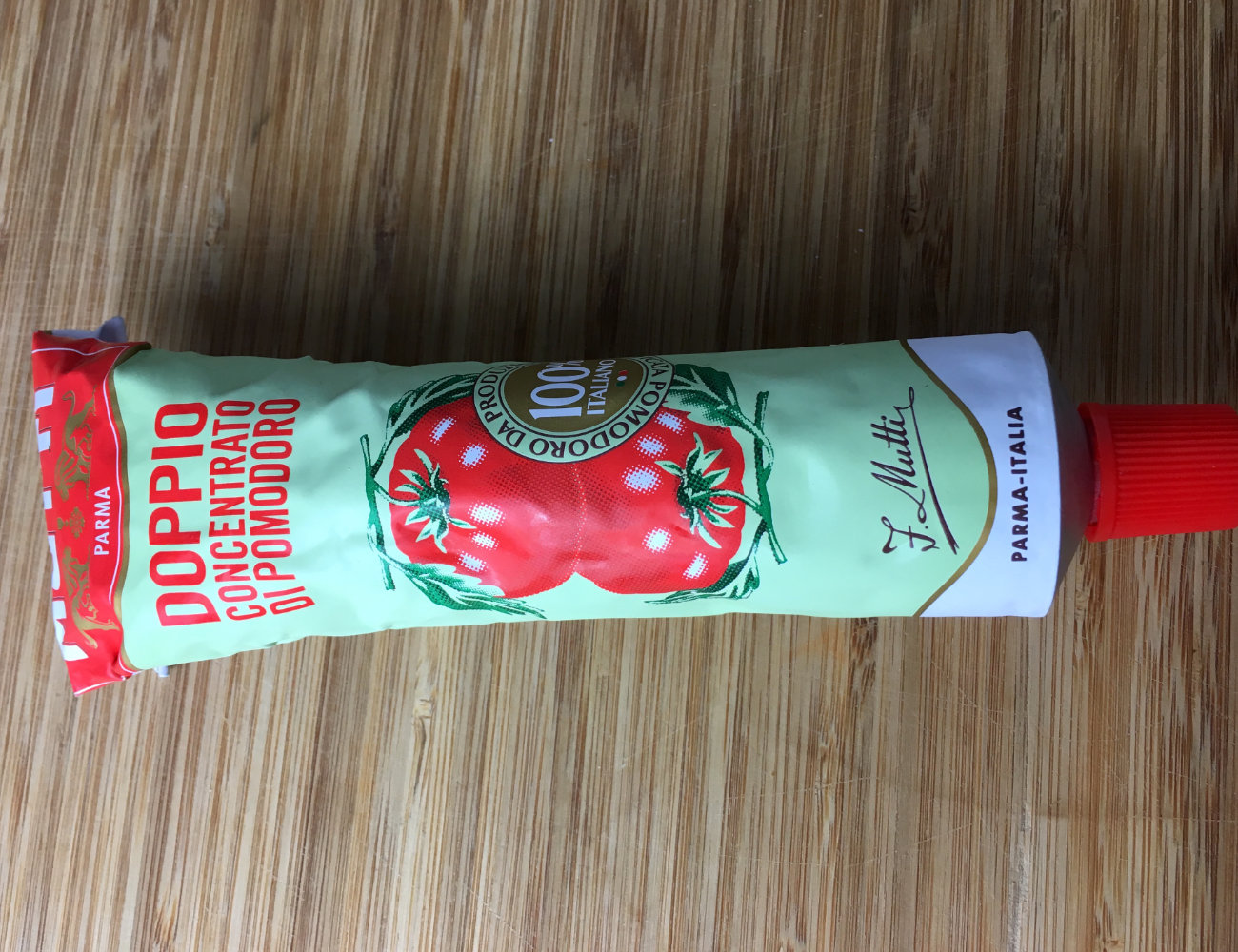

Spaghetti
Choose a quality pasta brand. Check out our guide to the best pasta brand in Italy for our recommendations.
We recommend using one of two Italian brands of spaghetti for this dish (affiliate links): Rummo Spaghetti or La Molisana Spaghetti
Both of these pasta brands are made with the best wheat for pasta and are cut with a bronze stamp. This translates into a pasta with a great taste and texture, which can withstand a long cook time and still maintain that great al dente taste!
Olive Oil, Garlic and Pepper
Beyond that, we just need extra virgin olive oil, garlic and chili pepper!
Making Spaghetti all’Assassina
Make the Tomato Broth
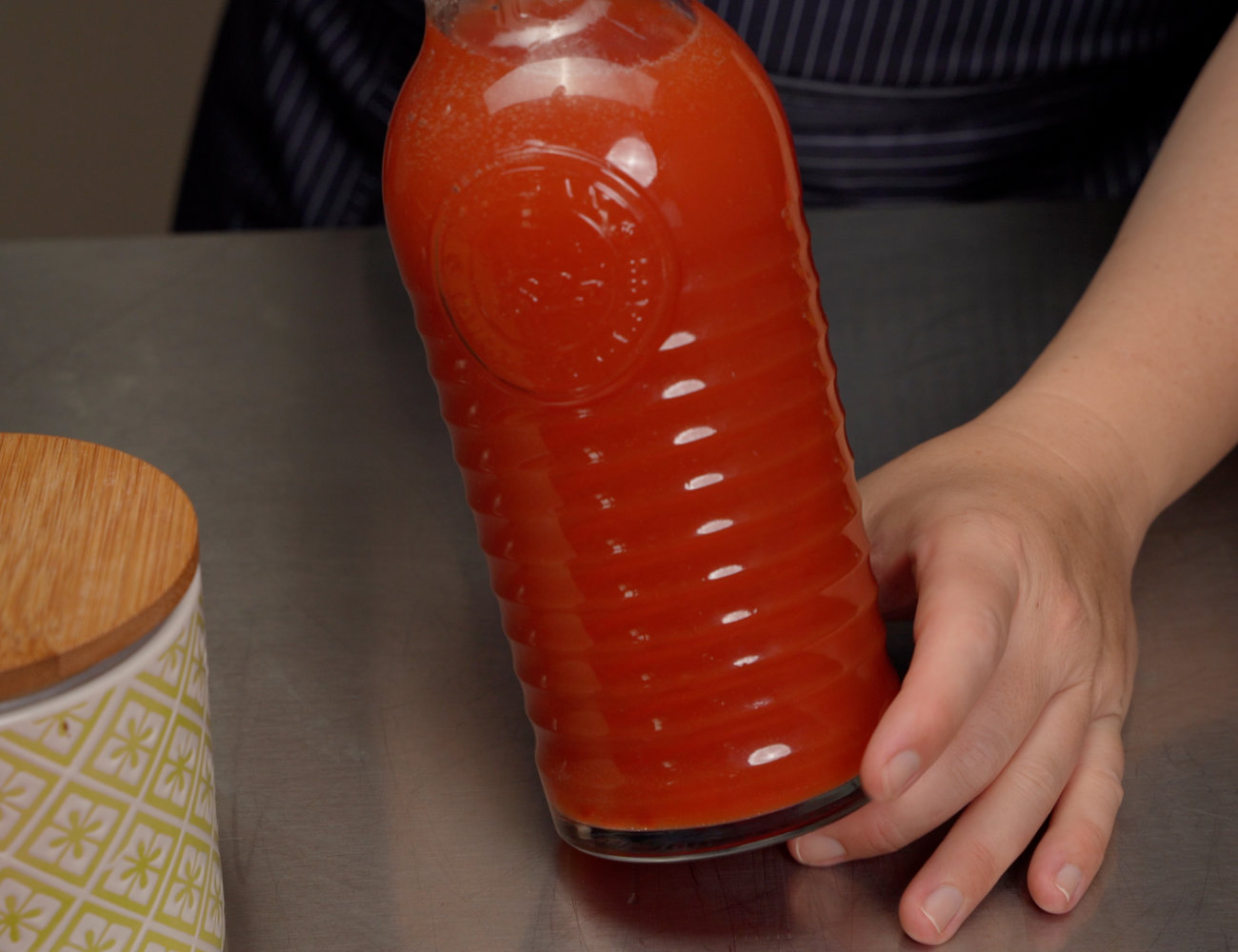

Combine the water (bottled or filtered) with the concentrated tomato paste to make a bright red liquid. Add a few pinches of salt to taste.
Bring this broth to a simmer. We will eventually add the hot tomato broth to slowly cook the pasta in the skillet!
Make a Soffritto
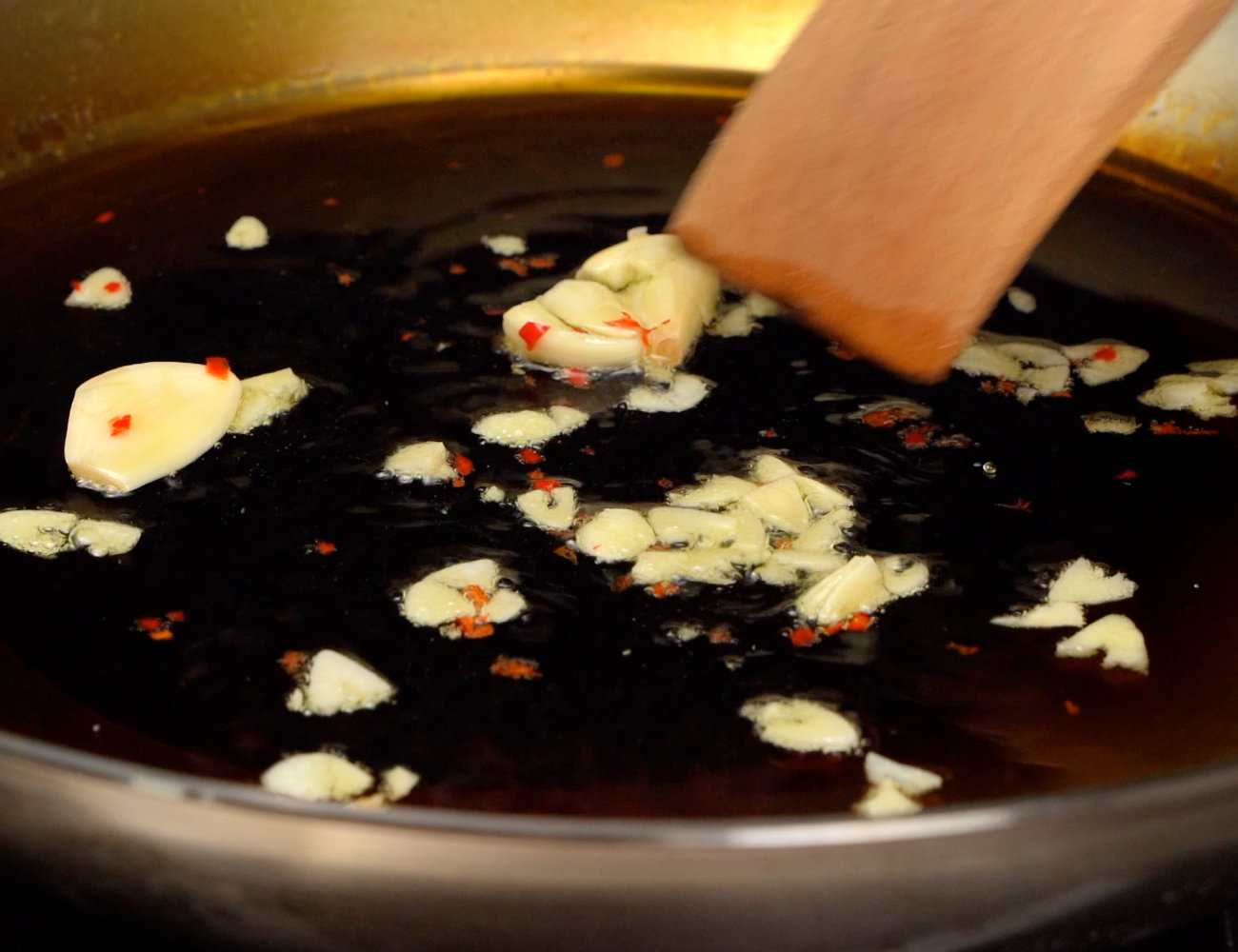

In Italian cooking, making a soffritto is the process of infusing olive oil with herbs and aromatics like onions, garlic and pepper. For the Spaghetti all’Assassina, we add minced red pepper to the olive oil along with three cloves of garlic (one minced, two whole).
Add the Tomato Purée
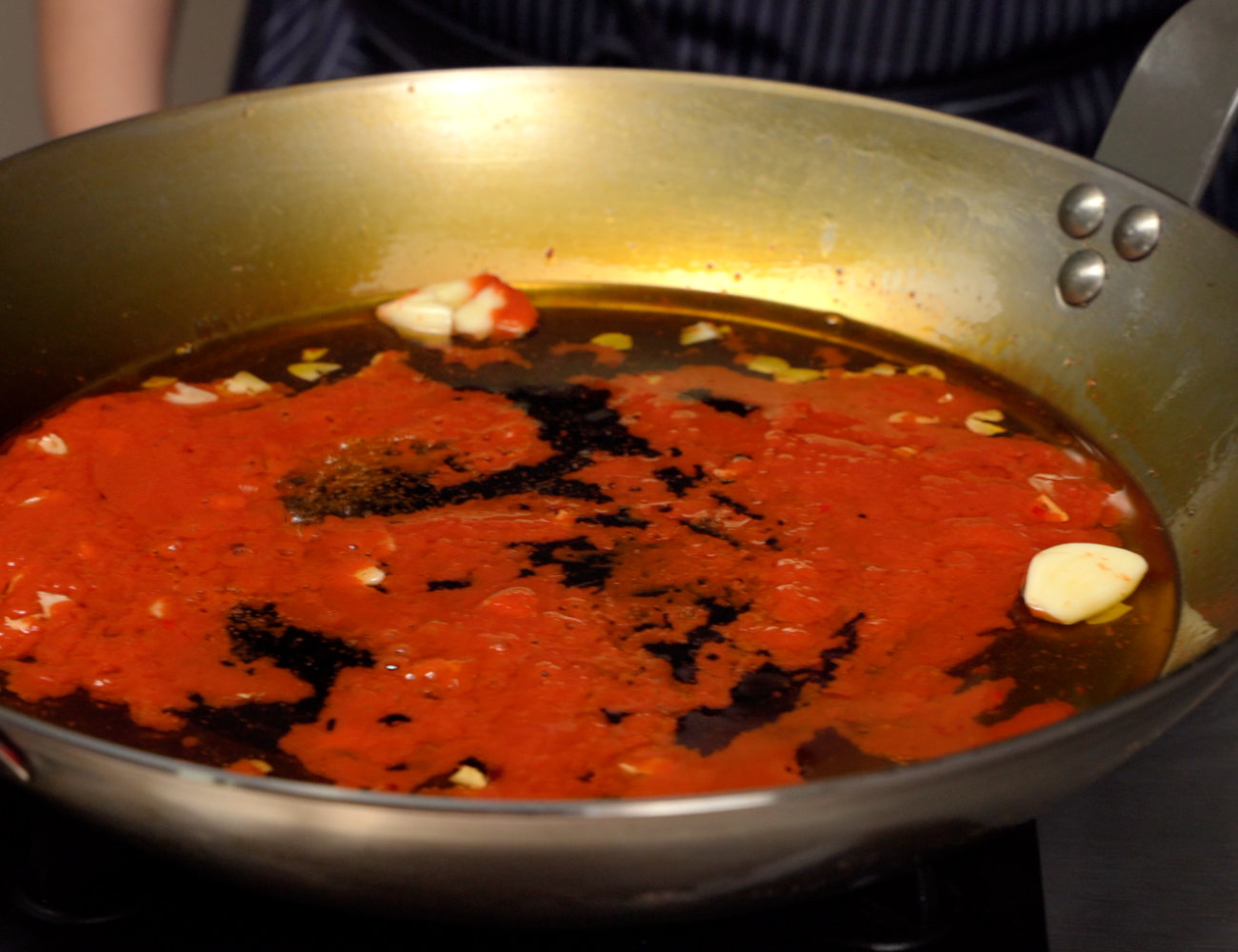

When the garlic has turned golden, add the tomato purée to the pan as well.
Fry the Pasta



Lay the spaghetti flat in the pan. If your pan is not large enough for the uncooked pasta to lay flat, break the tips off until the pasta can fit.
We want to fry the spaghetti in an organized fashion to ensure an even fry on all sides. Once the bottom of the spaghetti is fried (you decide how many browned strands of pasta you want), it’s time to flip the pasta and fry the other side!
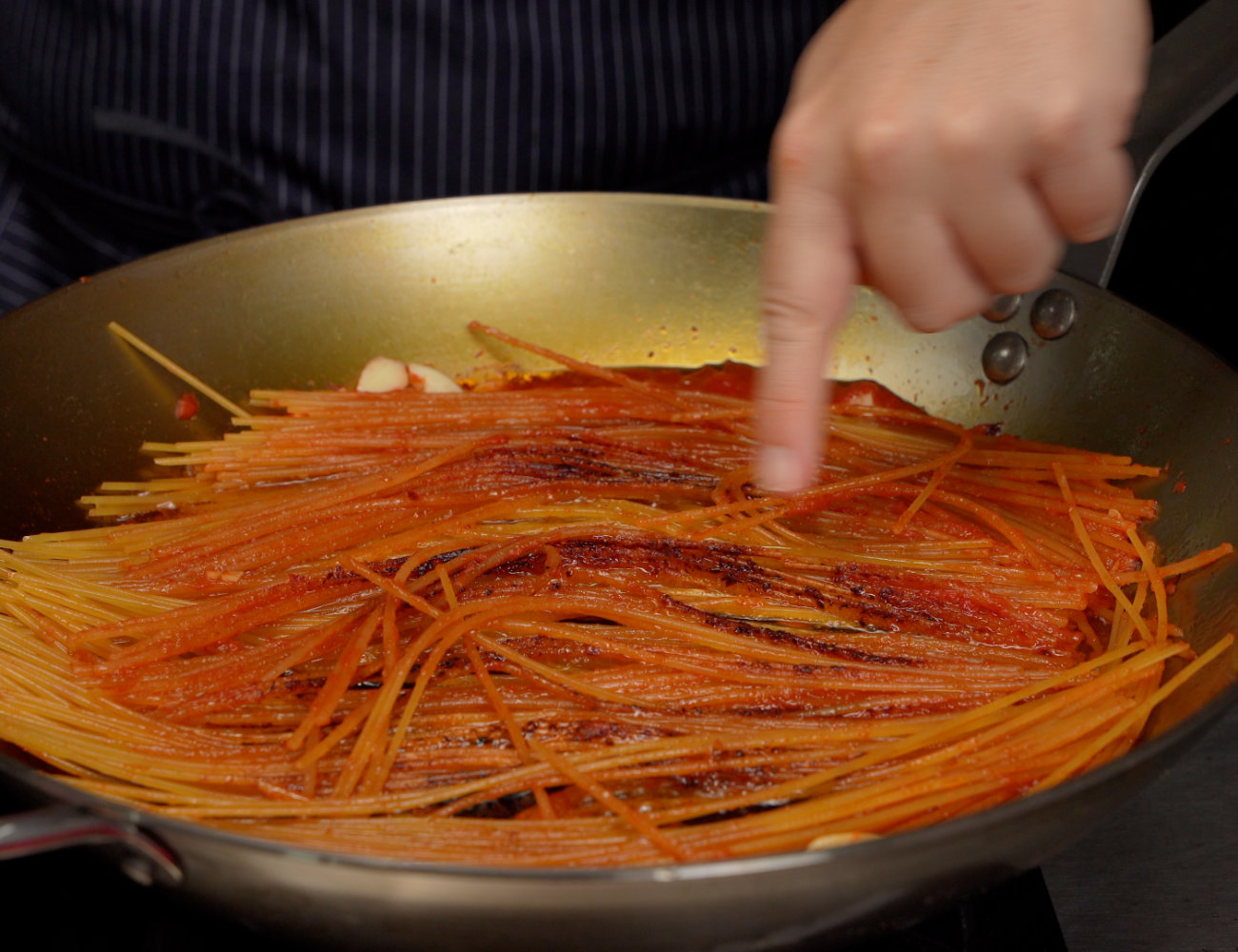

Once again, it’s best to flip the frying spaghetti carefully to make sure it’s getting an even fry on all sides. We use two spatulas or a spatula and a pair of tongs to flip the pasta. See below:
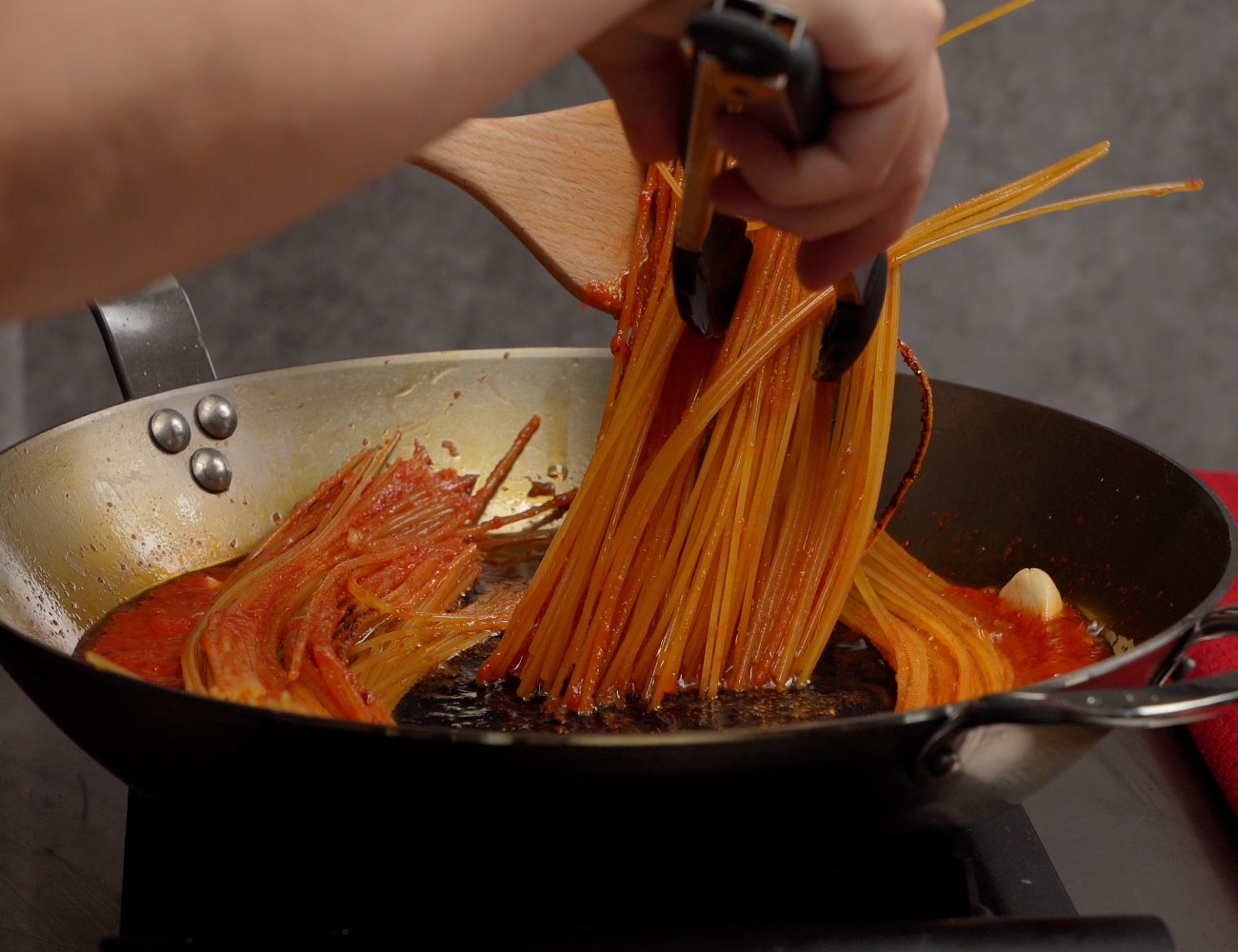

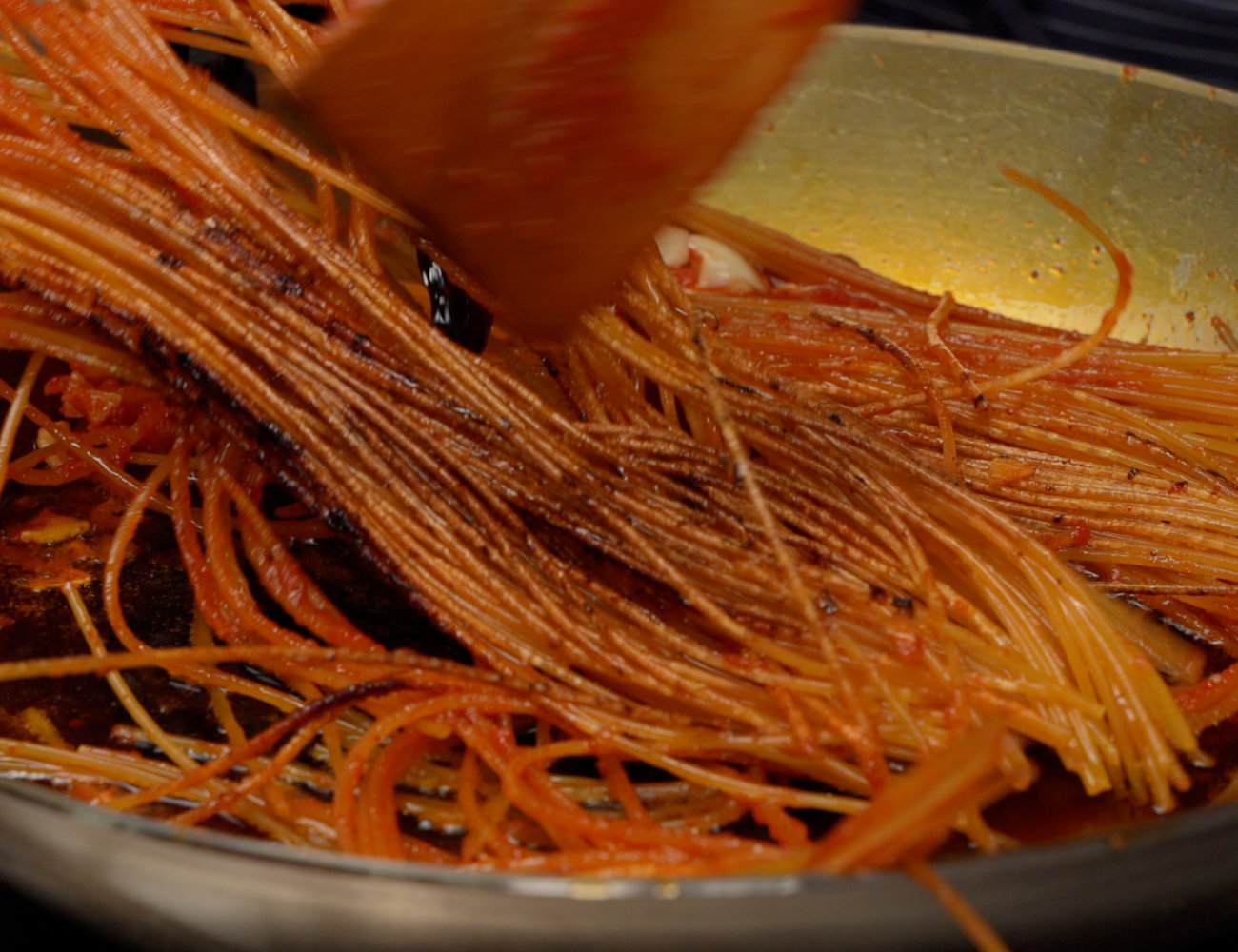

Slow Cook the Pasta
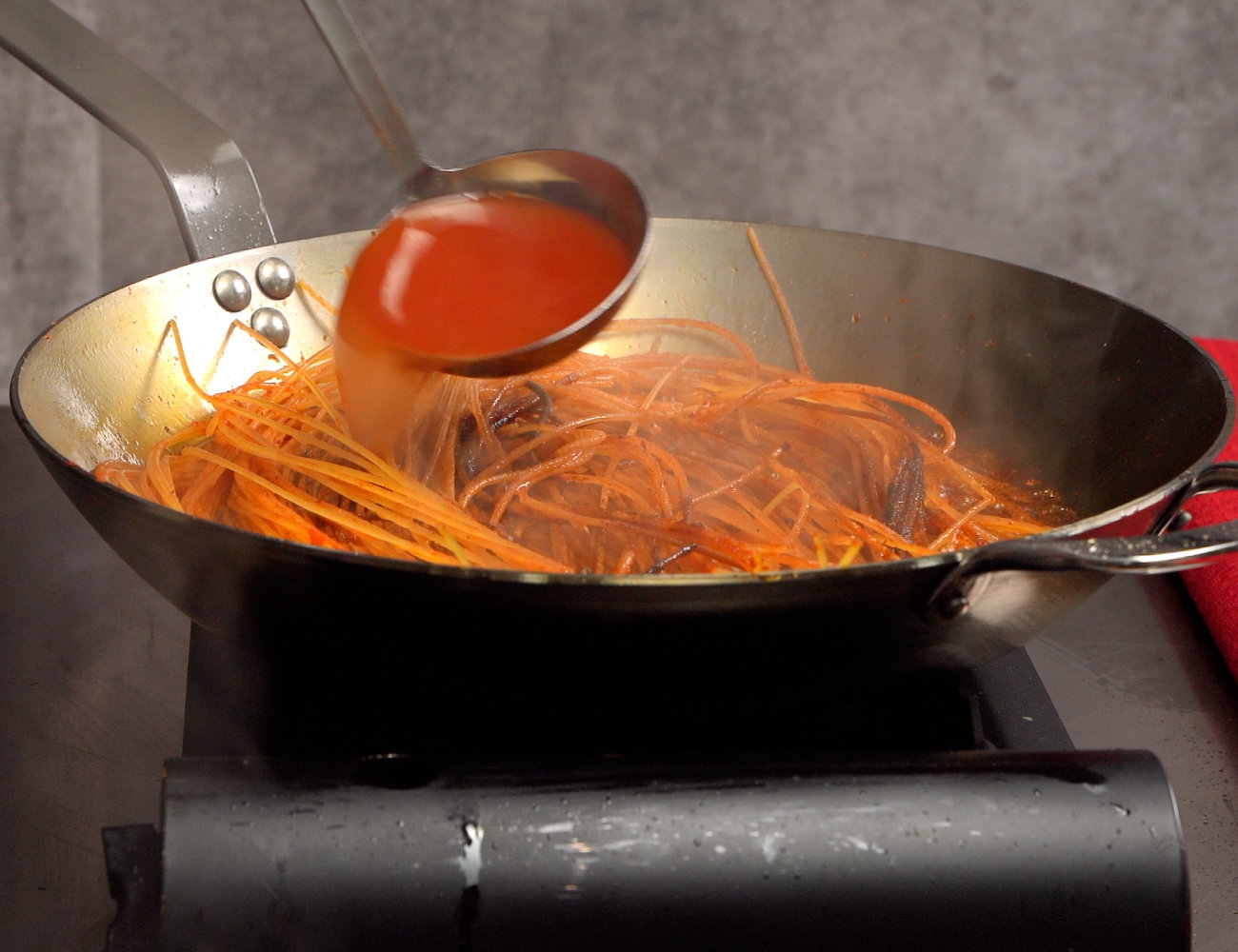

After you’ve fried the spaghetti on both sides, it is time to slowly cook it in tomato broth—like a risotto! Start by adding at least 3 ladles of hot tomato broth.
As a guide, set your timer for the amount of time required for al dente pasta listed on the spaghetti package instructions. Taste for doneness when the timer goes off.
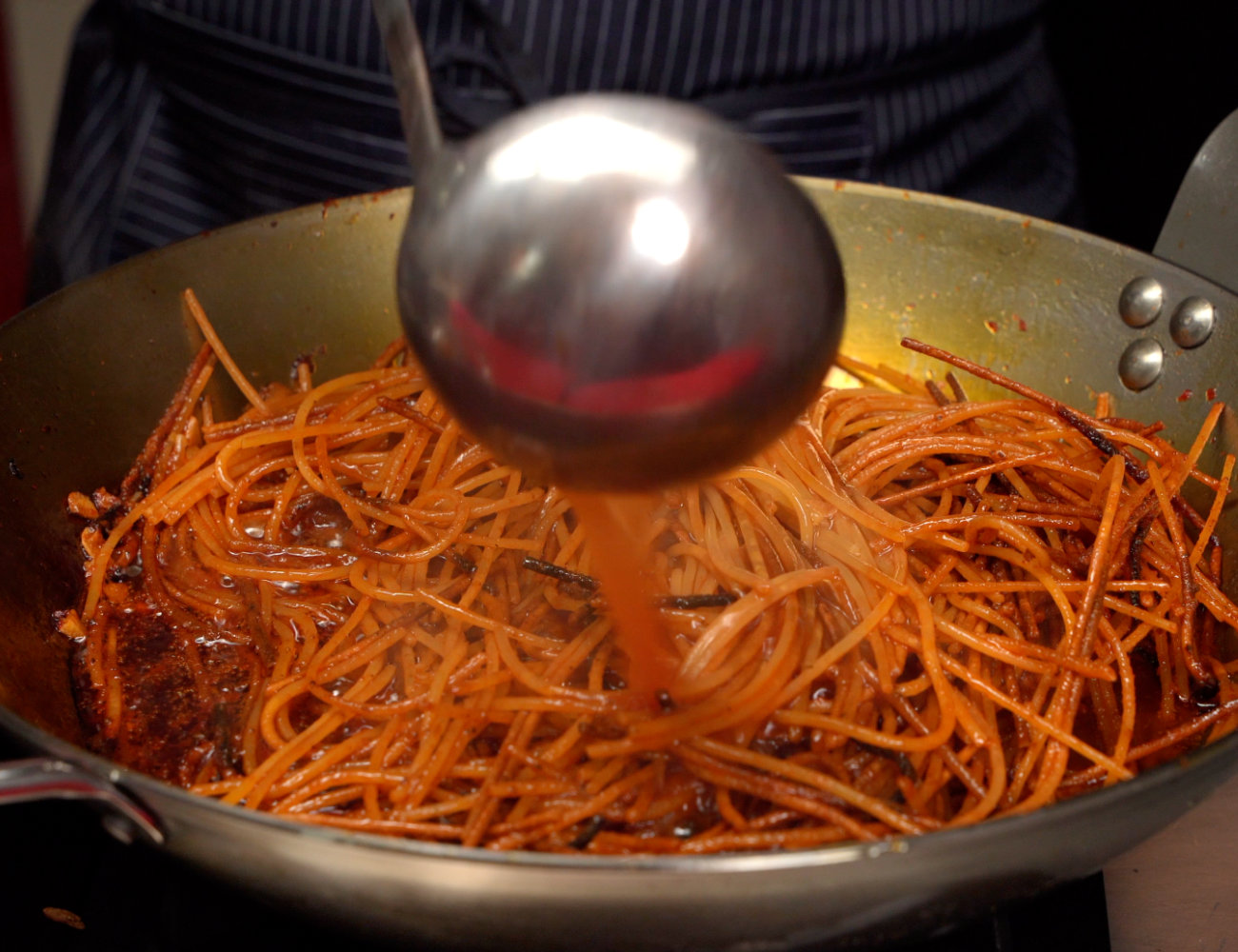

When the tomato broth has been absorbed and you start to hear the pasta sizzle, it is time to add another ladle or two of tomato broth!
The official recipe for Spaghetti all’Assassina is quite dramatic in describing this step. It says you should add more tomato broth any time you hear the pasta ‘scream’ (sizzle). It is here when we are ‘torturing’ the pasta to bring out its flavor.
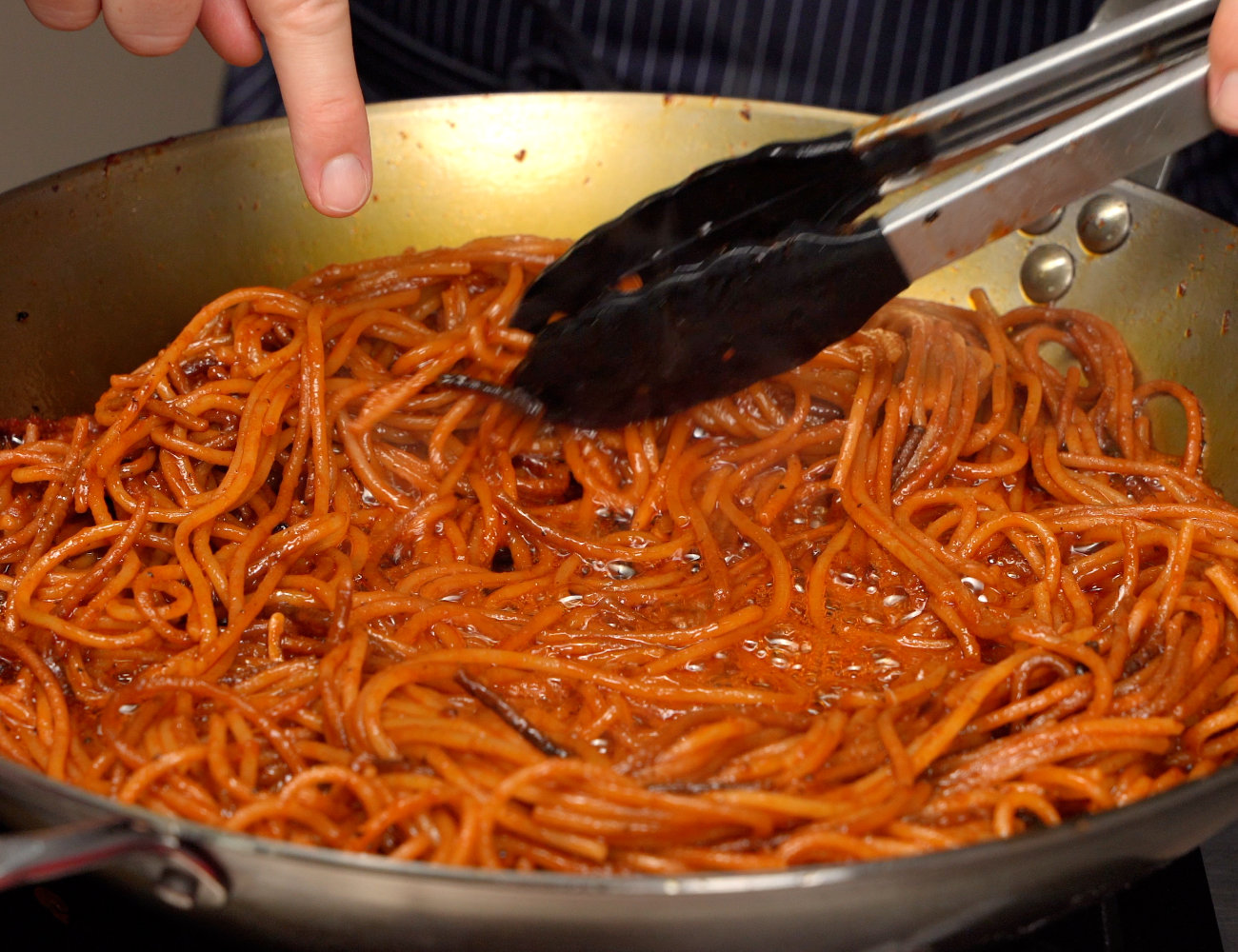

Eventually the spaghetti with absorb enough water that it will be flexible. You can stir it in the skillet with tongs.
Continue adding the tomato broth to cook the spaghetti to al dente. Since we are slowly cooking the pasta like a risotto, it may need a minute or two longer than the package instructions have indicated. Note that the texture will be a touch less soft than regular al dente pasta. This is because we have fried the spaghetti first.
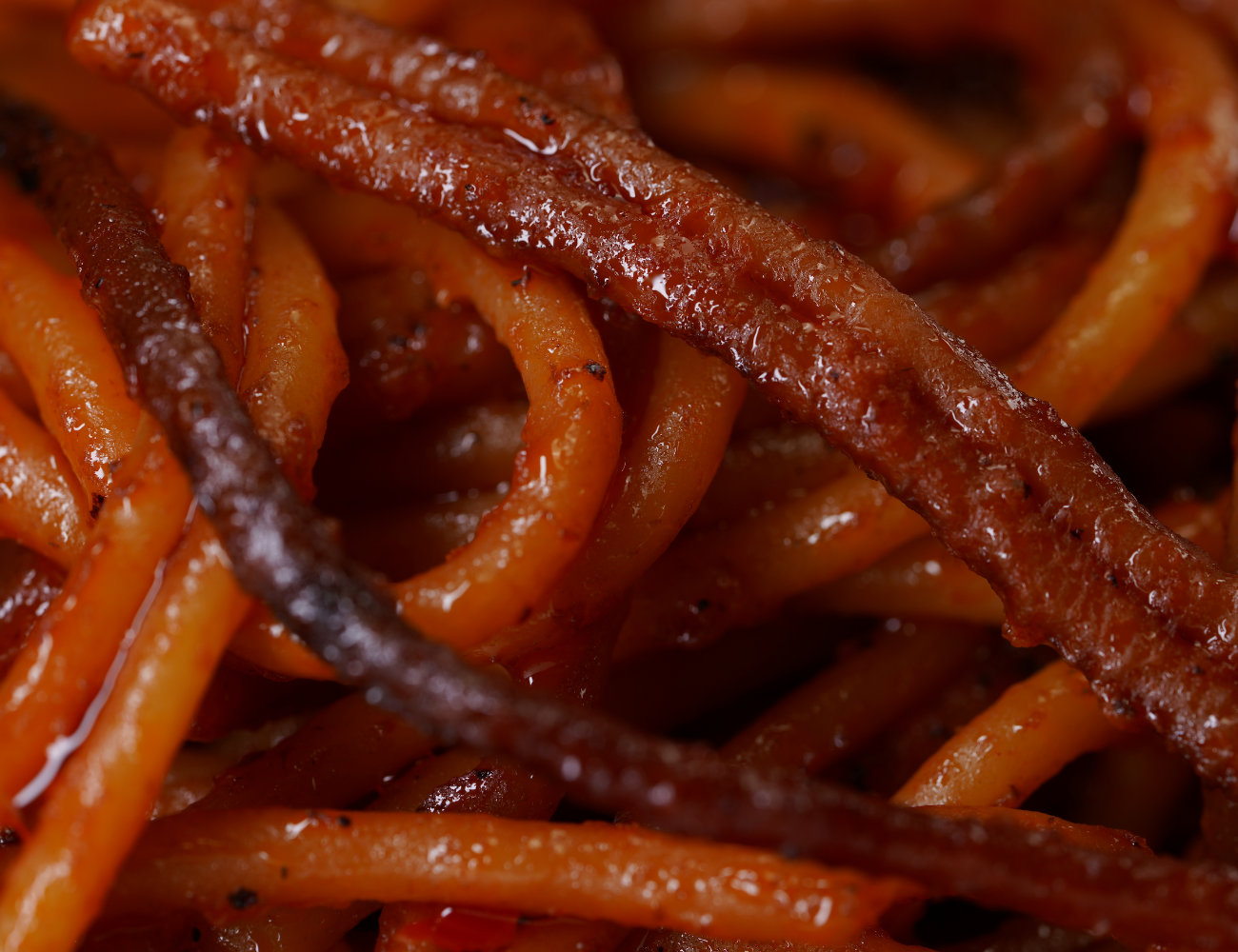

Here’s a close-up look at our finished Assassin’s Spaghetti! We have just a few browned strands of pasta—those will be extra crispy!
Part of the appeal of this dish in Italy is the treat of eating those crispy strands of pasta—similar to the crispy edges of lasagna!
Buon appetito 🙂
Italy’s Killer Spaghetti: Spaghetti all’Assassina
Equipment
- 1 large non-stick skillet —14” (36 cm) at least best: seasoned carbon steel or cast iron
Ingredients
- 5 ½ oz tomato puree
- 5 oz concentrated tomato paste
- 5 cups water
- 3 cloves fresh garlic 2 whole and 1 minced
- ½ cup olive oil extra virgin
- 1 whole fresh red chili pepper minced; or to taste
- 14 oz spaghetti
- 2 pinches fine salt or to taste
- 1 pinch granulated sugar (optional)—to sweeten tomatoes if the product is too acidic
Instructions
Choose the Right Pan
- This recipe requires that the pasta slowly cook from start to finish in the skillet.Ideally you’ll want to use a pan that is a minimum size of 14” or 36 cm. A seasoned cast iron or carbon steel pan is the pan that the official group overseeing the tradition of this recipe recommends.

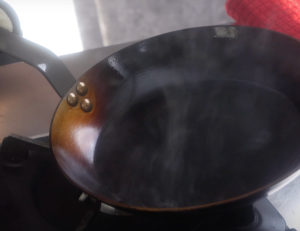
- If you need to use a smaller pan, you’ll want to break the dry pasta to fit it in the pan.
Make the Tomato Broth
- Combine the water with the tomato paste to make tomato broth. Add 2 pinches of fine salt and mix well. Bring the broth to simmer. In the meantime…5 oz concentrated tomato paste, 5 cups water, 2 pinches fine salt


Sauté the Garlic and Pepper
- Mince one clove of garlic and leave the other cloves whole.3 cloves fresh garlic
- Mince one fresh chili pepper after removing the seeds.1 whole fresh red chili pepper
- Cover the bottom of your skillet or pan with all of the olive oil and bring to medium heat. Add the garlic and pepper and sauté them until the garlic begins to turn golden.½ cup olive oil

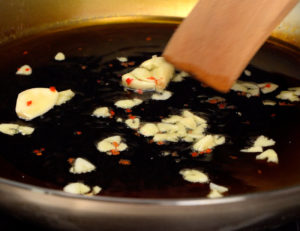
Fry the Pasta
- Add the tomato purée to the pan with the flavored oil. Give it a stir and reduce for a minute.5 ½ oz tomato puree, 1 pinch granulated sugar

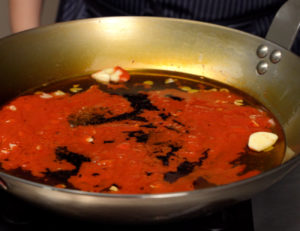
- Add the dry (uncooked) spaghetti) in an organized single layer across the pan. Raise the heat to medium and ‘fry’ the pasta until it is golden (not burnt). This takes about a minute.14 oz spaghetti

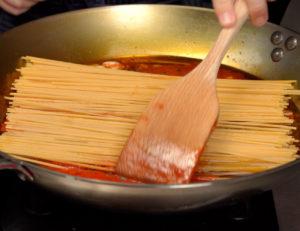
- Using thongs or a spatula, carefully flip the pasta to fry the other side. The pasta will still be stiff, so be careful to avoid breaking the strands.

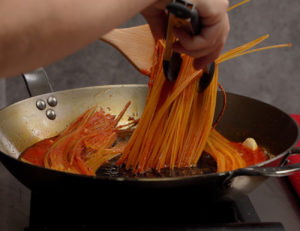
- Give the pasta one more careful flip. Then, start adding the tomato broth!

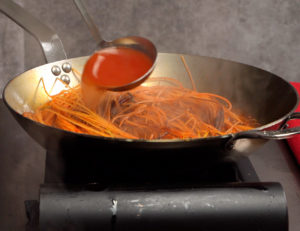
Slowly Cook the Pasta
- Add 3 ladles of hot tomato broth to the pan with the pasta. At this point, we want to slowly cook the pasta like a risotto.


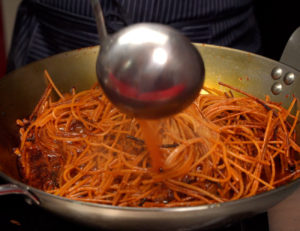
- Wait for the broth to reduce, and listen for the ‘sizzle.’ What you are hearing is the pasta starting to fry again and sticking to the bottom of the pan. So, when you hear the ‘scream’ of the sizzle, add a few more ladles of broth and repeat!



- Continue adding broth as needed until the pasta is cooked to ‘al dente’—adding a few more ladles of broth each time you hear the pasta 'scream'.
- Once the pasta has softened up, stir as needed to keep the pasta from sticking to the bottom of the pan.

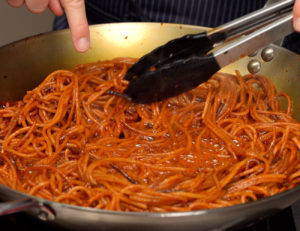
- You’ll probably need a bit more cooking time than what is written on the package instructions. However, it’s best to set the timer to the ‘al dente’ time and taste at that point to see if the pasta is done.Don’t expect the exact same texture as a normally cooked ‘al dente’ pasta! This pasta will be a bit chewer due to the way it is prepared. Buon appetito!

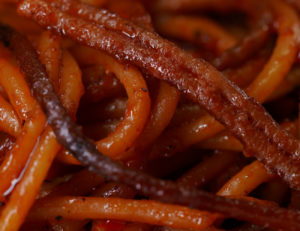

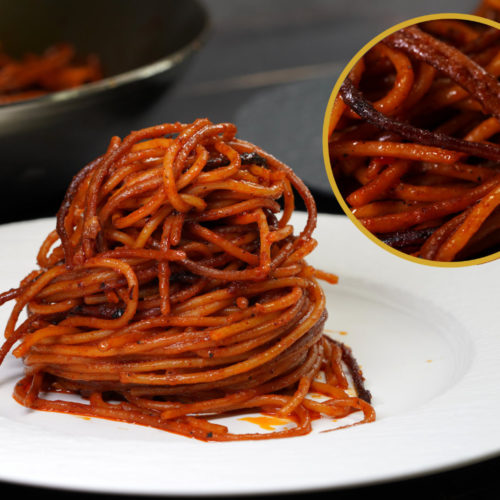

How Many tsp crushes red pepper flakes could I use to substitute for red peppers
Hi Jeffrey— Probably about 1 tsp. However, it can vary a lot depending on the strength of the product you are using. I would add 1/2 tsp and taste. Then, add more if needed.
what is the difference between tomato pure and paste??
Tomato Puree (Both in the US and Italy):
Tomato puree is generally made by cooking tomatoes and then straining them to remove seeds and skins. The resulting product is a relatively thick liquid that retains much of the tomato’s natural flavor. It’s less concentrated than tomato paste and has a lighter color. In both the US and Italy, tomato puree is used to add tomato flavor without the intense concentration of tomato paste. It’s often used as a base for sauces and soups.
Tomato Paste (Both in the US and Italy):
Tomato paste is made by cooking tomatoes for a longer period to reduce the water content, and then straining and cooking the liquid again to create a very thick, highly concentrated tomato flavor. It’s a deep red and has a rich, intense tomato taste. In both countries, tomato paste is used to add depth and richness to dishes, often in small quantities due to its strong flavor. It can typically found sold in ‘regular’ concentration, double or even triple concentrated.
Hope that helps!